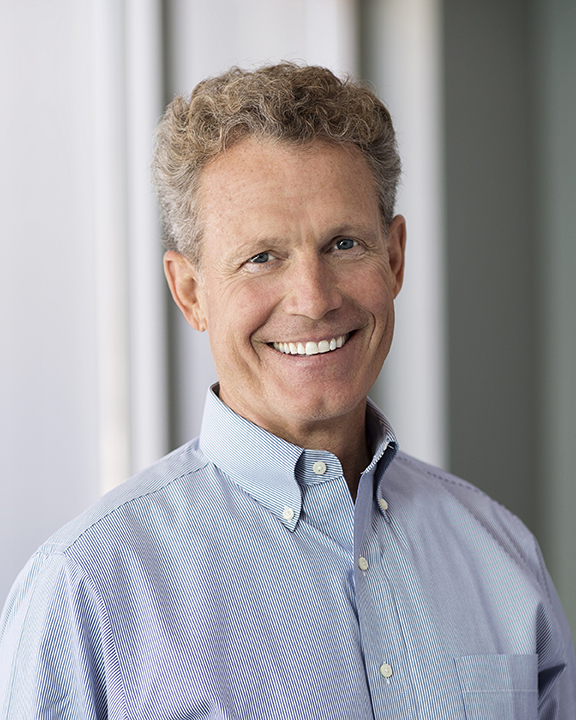

In his first few months on the job, Allscripts CEO Paul Black made a few big splash acquisitions and set the company on the path towards single product integration.
“We spent a lot of money on research and development for internal growth that yielded us several applications [within our main electronic health record product] around ambulatory, emergency room, patient accounting, records management, and radiology uses. In the first part of this decade, all those things weren’t necessarily sourced from Allscripts and now they are. We have a single platform capability that didn’t exist [when he first got to Allscripts],” says Black, who was brought onto the Chicago-based health IT company in late 2012.
More than that though, Black understood that the tide shifts in the healthcare industry meant that patient encounters weren’t necessarily going to be limited within the four walls of a hospital or doctor’s office. The company developed and invested in software platforms around population health, consumer, and precision medicine—to create a fuller picture of the patient’s health.
As healthcare providers get paid for their outcomes—rather than the number of times they see a patient—this kind of data will be integral to improving someone’s health. “From a leadership standpoint…the number one thing for us is to have a bold and accurate vision about not only what we need to do to be relevant, but also how to help our clients get to where they are today to where they need to be in the future,” he says.
A big part of this future is consumer-driven healthcare. When Black came to Allscripts in late 2012, the health IT industry was very much focused on meaningful use compliance, as part of the Health Information Technology for Economic and Clinical Health Act (HITECH) of 2009. In that sense, “consumer health” was simply a matter of getting patients to be able to view, download and transmit their patient record.
A lot has changed since then. Whether its traditional health IT companies like Allscripts or consumer tech companies like Amazon, there is a movement to connect patients to different data points at all times. This goes beyond the Fitbit and steps trend, but includes tracking data around physical AND behavioral health, nutrition, diet and exercise.
“All the things that have to deal with the mind, body and soul of a human,” Black says. In a sense people are adopting these data points anyway. One research report indicates the mobile health app market was valued at $28 billion last year and will grow to $102 billion by 2023.
But even more than just tracking data, Black says his vision is an easier experience for the patient, to be able to access this information in one set place, rather than logging into “15 different apps that do and say the same thing.”
“It may have started with meaningful use and connecting to the patient record, but to me it’s a broader idea of once you get that information, what else can you do to provide more efficient and effective care for the patient?”
In an industry suddenly flush with large-scale collaboration from non-traditional players, Allscripts announced at least one major partnership with a consumer tech company this year. In January, Allscripts and Microsoft agreed to work together to help connect patients with clinical trials at the point of care.
As an industry insider looking at some of these high-profile collaborations, such as CVS-Aetna, Black says companies are repurposing the assets they already possess to extend their networks and capabilities. It’s not uncommon to see this kind of collaboration in other industries, he notes. But Black says these new companies have to scale, while still being able to maintain a close connection with consumers. This will be no easy task.
For CEOs trying to navigate this changing landscape, Black offers a few pieces of advice. “I think it’s important to be agile, it’s important to be entrepreneurial. You have to have an environment and culture where you innovate. You have to have an eye for what’s going to happen in the future. Not just a vision for your company, but in the context of where healthcare is going and how you can have a longstanding imprint.”
He also says it’s important to have an element of trust with the teams you’re working with—not just internally and with clients, but with those outside collaborators. “That’s been one of the things about our company, if you’ve talked with people who’ve worked with us…that’s something we stress a lot…I asked my people to hire trustworthy people and we have a culture that rewards that.”
Read more: Former Aetna CEO Mark Bertolini on the CVS Deal, Yoga and Employee Wellness




0

1:00 - 5:00 pm
Over 70% of Executives Surveyed Agree: Many Strategic Planning Efforts Lack Systematic Approach Tips for Enhancing Your Strategic Planning Process
Executives expressed frustration with their current strategic planning process. Issues include:
Steve Rutan and Denise Harrison have put together an afternoon workshop that will provide the tools you need to address these concerns. They have worked with hundreds of executives to develop a systematic approach that will enable your team to make better decisions during strategic planning. Steve and Denise will walk you through exercises for prioritizing your lists and steps that will reset and reinvigorate your process. This will be a hands-on workshop that will enable you to think about your business as you use the tools that are being presented. If you are ready for a Strategic Planning tune-up, select this workshop in your registration form. The additional fee of $695 will be added to your total.

2:00 - 5:00 pm
Female leaders face the same issues all leaders do, but they often face additional challenges too. In this peer session, we will facilitate a discussion of best practices and how to overcome common barriers to help women leaders be more effective within and outside their organizations.
Limited space available.

10:30 - 5:00 pm
General’s Retreat at Hermitage Golf Course
Sponsored by UBS
General’s Retreat, built in 1986 with architect Gary Roger Baird, has been voted the “Best Golf Course in Nashville” and is a “must play” when visiting the Nashville, Tennessee area. With the beautiful setting along the Cumberland River, golfers of all capabilities will thoroughly enjoy the golf, scenery and hospitality.
The golf outing fee includes transportation to and from the hotel, greens/cart fees, use of practice facilities, and boxed lunch. The bus will leave the hotel at 10:30 am for a noon shotgun start and return to the hotel after the cocktail reception following the completion of the round.